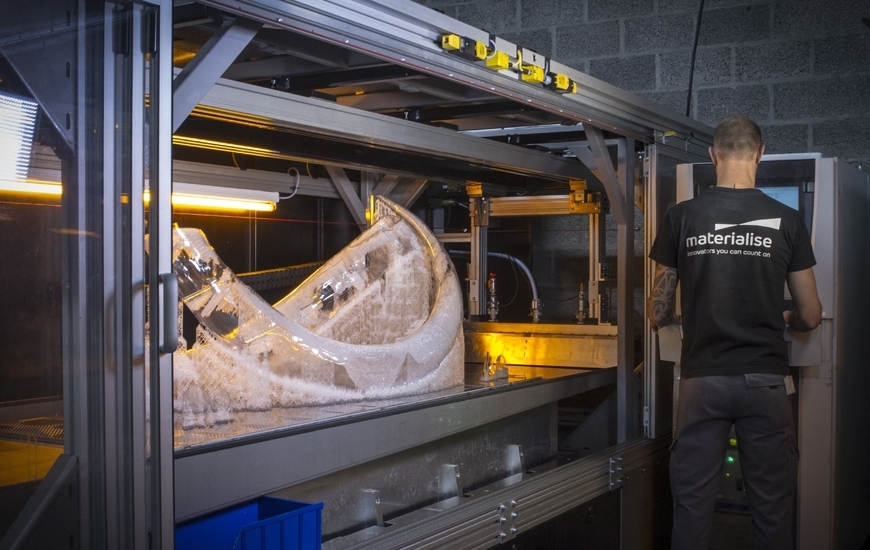by GIANLUCA CICALA*
Thermosetting polymers are widely used because of their good thermal, mechanical resistance, durability and for their easy processing. However, if one looks at 3D printing many technologies focus on the use of thermoplastics. For example, most of the hobbyist owns 3D printer using thermoplastic filaments. However, many big players like, for example Prusa and Zortrax, understood the value of thermosetting 3D printing launching on the market SLA or UV LCD printers. These technologies are based on the use of light curable thermosetting resins that allow to achieve high resolution (i.e. 50 µm) and very smooth surface finish.
Other top players, like Photocentric, understood the potentials of using thermosetting resins many years ago. Photocentric made impressive achievements with their daylight technologies enabling the factories of the future. As an exemplary case for their achievements during the first lockdown Photocentric put in place its patented 3D printing technology to deliver millions of items of face shields every month for frontline workers reaching the goal to 3D printing 5000 parts a day. Photocentric’s technologies allows to achieve printing with medium to big volume using LCD screen of increasing size. Their Magna printers reaches a build volume of 510 x 280 x 350mm. However, the problems of debonding parts from the vat film somehow limits the possibility to print large parts on this machine type based on bottom-up movement of the building platform.
Parts dimensions is not a limiting factor if thermoset’s printing is used on extrusion based machines operating on a gantry or if very large bath and lasers hitting the liquid surface for the top is used. However, recent advancements that can be of high interest for the composites field have been achieved using extrusion-based machines. Two relevant examples of the possible achievements of this technology are reported by Magnum Venus Products (MVP) and Massivit. MVP developed the so called Reactive Additive Manufacturing (RAM) which is claimed to be the world’s first and only large-scale thermoset additive manufacturing machine enabling 3D printing of thermoset materials for prototype and production parts. The material used for printing is a special poolyester grade named prd-1520 developed by Polyint. The RAM machine can be used for prototyping.
Massivit is a global leader that since its inception understood the potential of extrusion based additive manufacturing of thermosets. Starting from printing of big object in the advertisement industries they are now moving in the fields of tooling. An exemplary case study is the production of thermoforming tools produced for ACS Hybrid Inc obtained by using the Massivit 1800Pro. This technologies made impressive advancements being awarded with the ACE awards for composites excellence with the MASSIVIT 10000 that is claimed to shorten production time of molds by 80% and save up to 90% of manual labor. The tool pattern is created with a sacrificial, UV-curable gel using Massivit 3D’s patented Gel Dispensing Printing Technology (GDP). After printing, the desired tool is produced by casting thermoset engineering materials used for tooling. Other examples include the development of tooling for seat.
The use of thermosets in additive manufacturing is opening a wide range of possibilities as demonstrated by Carbon3D and Nexa3D with their continuous printing approaches. However, interesting developments for applications in the composite sectors have been achieved once again using extrusion based additive manufacturing. Two exemplary companies are Moi Composites and Continuous Composites. MOI presented several interesting case studies ranging from the boat hull MAMBO, BMX frame and dental aligners. Similarly, Continuos Composites technology begins with a continuous dry fiber that is impregnated in situ with a tailorable, snap curing thermosetting resin delivered by the end effector. Continuos Composites partnered with ARKEMA to offer a wide range of thermoset matrix suitable for its technology branded by N3xtdimension.
Recently, other interesting outcomes were presented in the scientific literature covering new concepts that can lead to further achievements in the future. For example, the volumetric additive manufacturing was presented that, in the future, can lead to truly 3D printing with shapes printed without the need for supporting.
Other interesting research regarded 3D printing of reprocessable thermosets. Zhang et al presented interesting case studies using a laboratory made formulation cured in a custom DLP 3D printing system.
In conclusion, we can state that a bright future can be predicted for thermosets in 3D printing if the development of large area printing will be pursued together with the possibility to impregnate and print continuous reinforcement fibers. Printing with self-healing thermoset can open new application fields achieving composites with improved durability.
* Professor of Materials Science and Technology (University of Catania)
-

-
22 December 2021






















